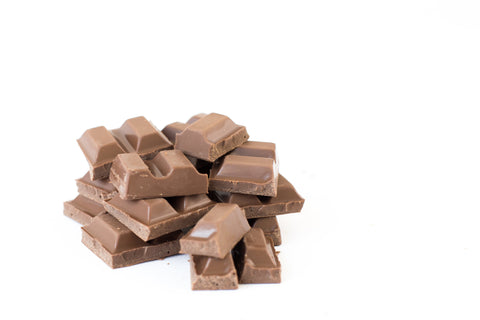A Sweet History Lesson
 Chocolate dates back to Olmec and Mayan civilizations in southern Mexico. This “food of Gods” was mostly consumed as a bitter-tasting drink, without any sweetness and was made by fermenting, roasting, grinding of cocoa beans, adding water and spices such as vanilla, honey, and chili peppers.
Chocolate dates back to Olmec and Mayan civilizations in southern Mexico. This “food of Gods” was mostly consumed as a bitter-tasting drink, without any sweetness and was made by fermenting, roasting, grinding of cocoa beans, adding water and spices such as vanilla, honey, and chili peppers.
Drinking cacao was a status symbol. The ancient civilizations used it as aphrodisiac, as they believed in its refreshing, magical, and even spiritual properties. Thus, the consumption of this ceremonial drink was limited to rulers, warriors, priests, and nobles and was used in sacred rituals.
For several centuries, cacao beans were used as currency throughout Mesoamerica. When the Aztecs conquered Central America in the 14th century, they longed for cocoa, but they could not grow it in a dry mountain climate. They began to trade with the Mayans for cacao beans. Aztec leader Montezuma was believed to like the drink so much that he drank three gallons of chocolate per day to maintain his libido.
In the 1500s, Spanish conquistadors, among them Hernán Cortés, embarked on their adventure in search for gold and silver. Instead, Cortes found the cocoa bean and introduced it in Spain. Spaniards added sugar and cinnamon to the bitter drink, but one thing remained unchanged: the chocolate was still a symbol of luxury, strength, and power. Needless to say that only monarchs and well-off people could afford the new expensive product.
As the Spanish dominated the cocoa market, they tried to keep the secret of chocolate to themselves. But when the daughter of the Spanish King Philip III married the French King Louis XIII in 1615, she gave the recipe of her beloved chocolate to her husband’s nation. Soon chocolate became popular throughout Europe, and the aristocracy used it as an elixir with amazing healing properties. To meet the growing demand for chocolate, European countries began to establish plantations for the cultivation of cocoa and sugar in the equatorial colonial countries.
Two centuries later, Dutch chemist Coenraad Johannes van Houten invented a machine that separated the cocoa mass from the cocoa butter. This breakthrough paved the way for the production of the first solid chocolate bar in 1847 by the British company JS Fry & Sons. While Swiss chocolatier Daniel Peter is generally credited for adding dried milk powder to chocolate to create milk chocolate in 1876, it wasn’t until several years later that he worked with his friend Henri Nestlé to create the Nestlé Company and to bring milk chocolate to the mass market.
Despite the evolution chocolate underwent throughout the 19th century, it was still hard and difficult to chew. In 1879, another Swiss chocolatier, Rudolf Lindt, invented a machine, the shell-shaped conch, that rotated and aerated chocolate to give it the desired smooth consistency.
By the early 20th century, family chocolate companies such as Cadbury, Mars, Nestlé, and Hershey were mass-producing a variety of chocolate confections to meet the growing demand for the sweet treat.
In spite of mass production of modern-day chocolate, some chocolatiers still believe in making their chocolate creations by hand to keep the ingredients as pure as possible.
Statistics show that Americans consume on average 12 pounds (~5 kg) of chocolate and 5 pounds (~2.5 kg) of cocoa annually.
Source: History.com
